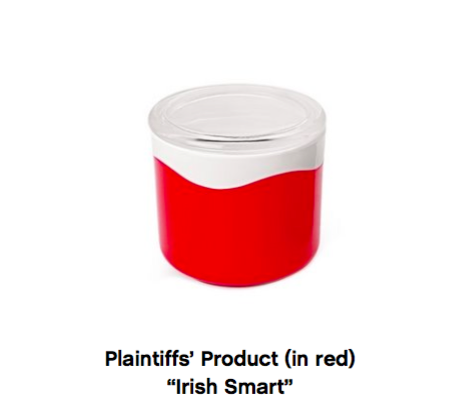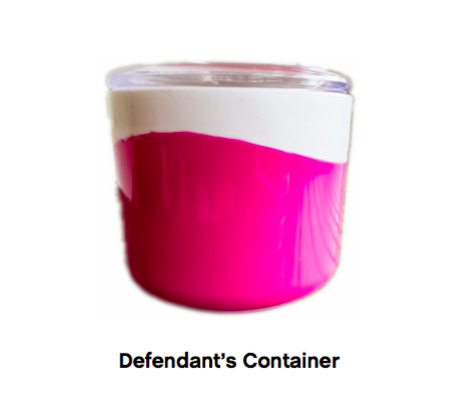 Just like other aspects of civilisation and life, shapes too had humble beginnings. The clean and simple – circles, squares and triangles, the most basic shapes of our planet, laid the foundation for today’s complicated designs and patterns. Also, as we have heard, shapes were used to communicate and as part of a language in early civilisation. While shapes today have evolved and become more numerous and complicated, they are still a language in themselves and are certainly still a method of communication. Shapes continue to communicate more subtly through whispers, steering the choices we make.
Just like other aspects of civilisation and life, shapes too had humble beginnings. The clean and simple – circles, squares and triangles, the most basic shapes of our planet, laid the foundation for today’s complicated designs and patterns. Also, as we have heard, shapes were used to communicate and as part of a language in early civilisation. While shapes today have evolved and become more numerous and complicated, they are still a language in themselves and are certainly still a method of communication. Shapes continue to communicate more subtly through whispers, steering the choices we make.
Shapes and patterns appear so important to our country, that we have not one, not two, but at least three different laws that seek to ‘protect’ them. These laws are only too well known on this blog – the Designs Act, 2000, the Trademark Act, 1999 and the Copyright Act, 1957. While all these laws were made to serve different purposes their application in real life show apparent overlaps. Shamnad’s chapter on overlapping IP rights in India in the book “Overlapping IP Rights” jointly edited with Neil Wilkof explains these overlaps. We have covered the issue of copyright and design overlaps on this blog here, here, here and here. The case that this post deals with tries to bring back to light the issue of overlaps between design and trademark protection.
Shapes may fall within what we know as trademarks because like other trademarks, shapes help communicate a particular brand, quality and identity to consumers. But shapes and configurations that do not fulfil the criteria of a ‘trademark’, and fulfil certain other criteria (as explained below), can be protected as a design. But since shapes will be shapes whether called a ‘design’ or a ‘trademark’, it is interesting to examine whether a shape, falling within the ambit of protection under the Designs Act, which starts functioning as a trademark should still be accorded protection under the Designs Act.
Against this background, Bombay High Court decision in the case of Selves Industries v. Om Plast is examined. The facts of this case are simple enough – the Plaintiffs have a registered design for the design of a container and a lid. The Plaintiffs also claim that by virtue of continuous and extensive use and sales, they have acquired reputation and goodwill in relation to this container in the market – implying thereby that the shape of the container has started functioning as a trademark. Therefore, they claim that since the Defendant’s container is indistinguishable from their container, the Defendant has (i) infringed the copyright in their design and (ii) has also sought to pass off its product as that of the Plaintiffs. See image.
The Defendant on the other hand has claimed that the Plaintiffs’ design is not novel, that there are several others who use similar designs, that the registration is with respect to a shape and configuration and not the wave-form which is ‘simply an ornamentation’ , that the Defendants also have a registration which precedes the Plaintiff and that no case has been made for passing off.
In examining whether or not design infringement is established, the court analyses various provisions of the Designs Act. The first provision, being the threshold, is the definition of a ‘design’ (Section 2(d)). This section as the court explains is a restrictive definition that has four facets – The first is that it relates to features of shape, configuration, pattern, ornament or composition of lines or colours. The second is that these must be applied to an article (separately defined) and that this application may be in two-dimensional or three-dimensional or both forms. The third is that this application must be by an industrial process or means, and this process or means may be manual mechanical or chemical, either separate or combined. The final aspect is that in the finished article, these features mentioned earlier, as applied by the defined process, must have, and have only, a visual appeal. Among other exclusions (artistic works under the Copyright Act), this definition excludes a trade mark under the Trade Marks Act, 1999. Further, Section 19 of the Act provides various grounds for cancellation of a design, one of them being that the design is not a design defined under Section 2(d) of the Act.
The Defendant argued that the Plaintiffs’ design is not a design that falls under the definition of Section 2(d) because the definition is a restrictive definition which means “only” – shape, configuration, pattern, ornament or composition of lines of colours applied to any article can be registered as a design. The Defendant claimed that the Plaintiffs have obtained a registration only for the shape and configuration of the container but not for its ‘ornamentation’ i.e. the wave-form. It was also argued that this shape is not novel and is a variant of shapes well known in the trade. However, the court dismissed this contention by holding that the wave pattern being infused in the container forms a part of the container itself. Therefore, the wave pattern which is part and parcel of the container is not a pure ornamentation but is part of the article’s configuration itself.
The court also holds that the Plaintiffs’ design is novel as there is no material to show use by any person prior to the priority date claimed by the Plaintiffs. The court also holds that the Defendant’s submission that it is a registered proprietor of this wave design prior to the Plaintiffs is incorrect. Further, with respect to other competitors using a similar design, the court notes that that it is no defence for an infringer to say that others in the market have been equally guilty of infringement. With respect to infringement the court cites the cases of Whirlpool of India Ltd v Videocon Industries Ltd and Castrol India Limited Vs. Tide Water Oil Co. (I) Limited which have laid down the test for design infringement i.e. the court must assess whether the essential features of the Plaintiffs’ design have been copied and similarity is to be judged by through the eye alone. After this assessment, a prima facie finding of infringement is made.
With respect to passing off, (trademark registration for the shape for the container does not appear to have been obtained) the court notes that the Defendant’s sales have started at a later point in time and are negligible as compared to that of the Plaintiffs. The court then holds that the test for establishing reputation and goodwill is not absolute as against a predetermined benchmark but is relative to the reputation of the rival. Therefore, the Plaintiff succeeds even in the passing off action.
So we see, the Plaintiffs’ design is not only protected under the Designs Act but also as a trademark under common law. This case does not go into the question of whether or not a design can be protected both under the Designs Act as well as a trademark under common law. The court does not cite the Micolube case on this point and no contention is made regarding this threshold issue.
As the definition of ‘design’ excludes a trademark under the Trademark Act, at the threshold, an issue raised by Shamnad in his book mentioned above and his post here, is that, since a trademark encompasses both a registered and unregistered trademark, once a design starts functioning as a trademark and an action of passing off is brought, design registration should lapse. Single bench decisions have taken diverging views on whether or not an action of passing off lies in cases where a remedy for design infringement already exists. The Delhi High Court in the Tobu Enterprises v. Megha Enterprises case (a case relating to design infringement and passing off of tricycles) held that Section 53 of the Designs Act already provides remedies for infringement of designs and unlike the Trademarks Act, since the Designs Act does not provide for a remedy of passing off, no injunction can be granted on this ground. In the case of Smithkline v. Hindustan Lever, however, the single judge held that the protection granted to a registered design is set out under the Designs Act, but, an action of passing off is based in common law. Therefore, the rights are independent and distinct. These diverging positions were referred to a three judge bench of the Delhi High Court in the Micolube case. In this case, the court agrees with the Smithkline case line of reasoning by holding that design registration does not bar an action in relation to passing off. This is because passing off is a common law remedy and is distinct from the remedy provided under the Design Act. The court also observes that the purpose of the legislation and the common law right are different and hence protection provided is different. However, the question that still remains is that though the purpose of different laws may be different, if an shape which is not registered as a trademark (if it is registered then automatically section 2(d) excludes such a shape from being registered as a design) starts functioning as a trademark to what extent should it be protected.

